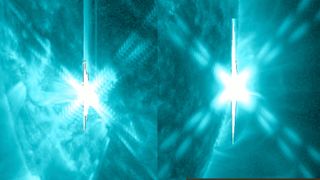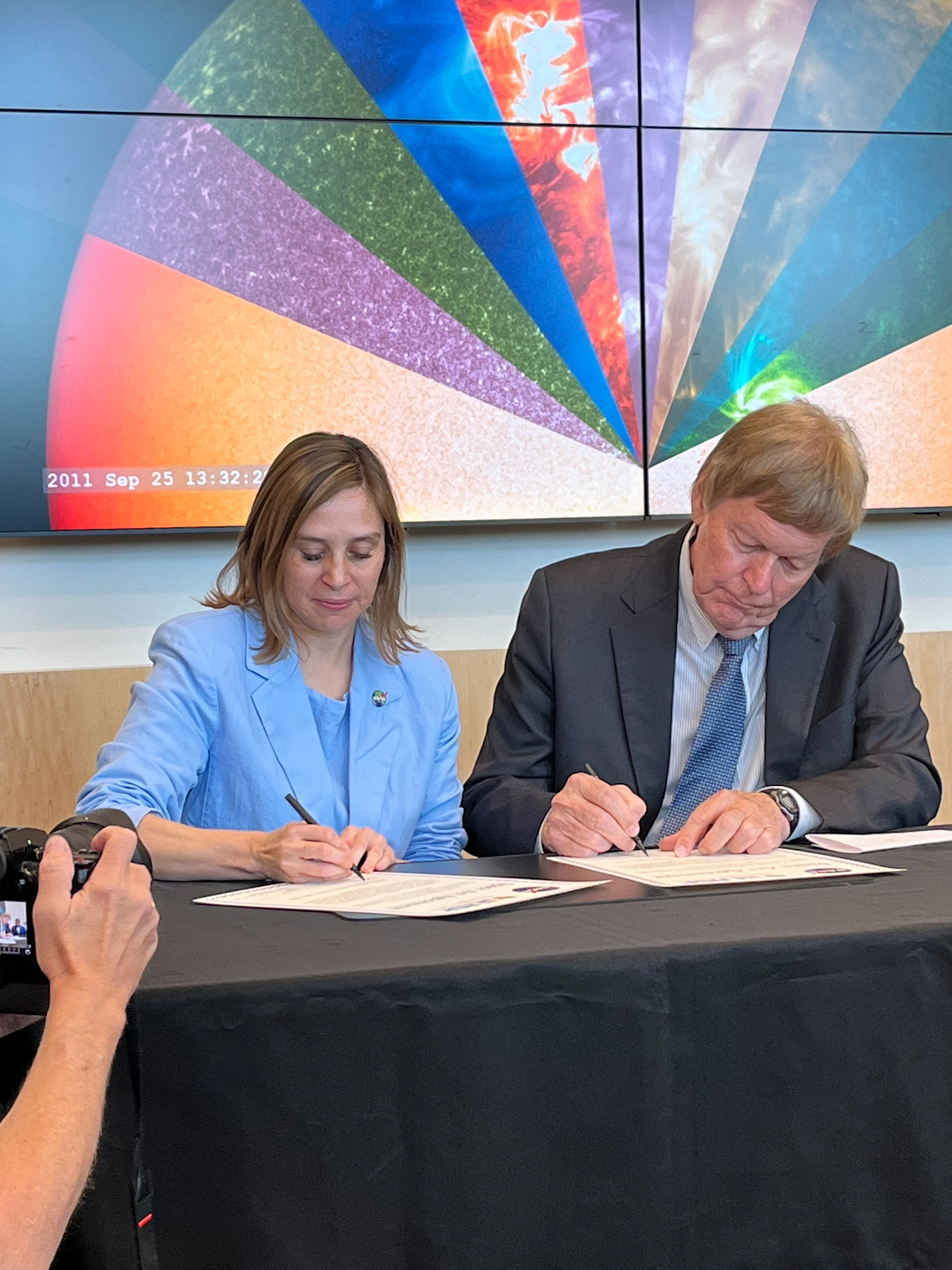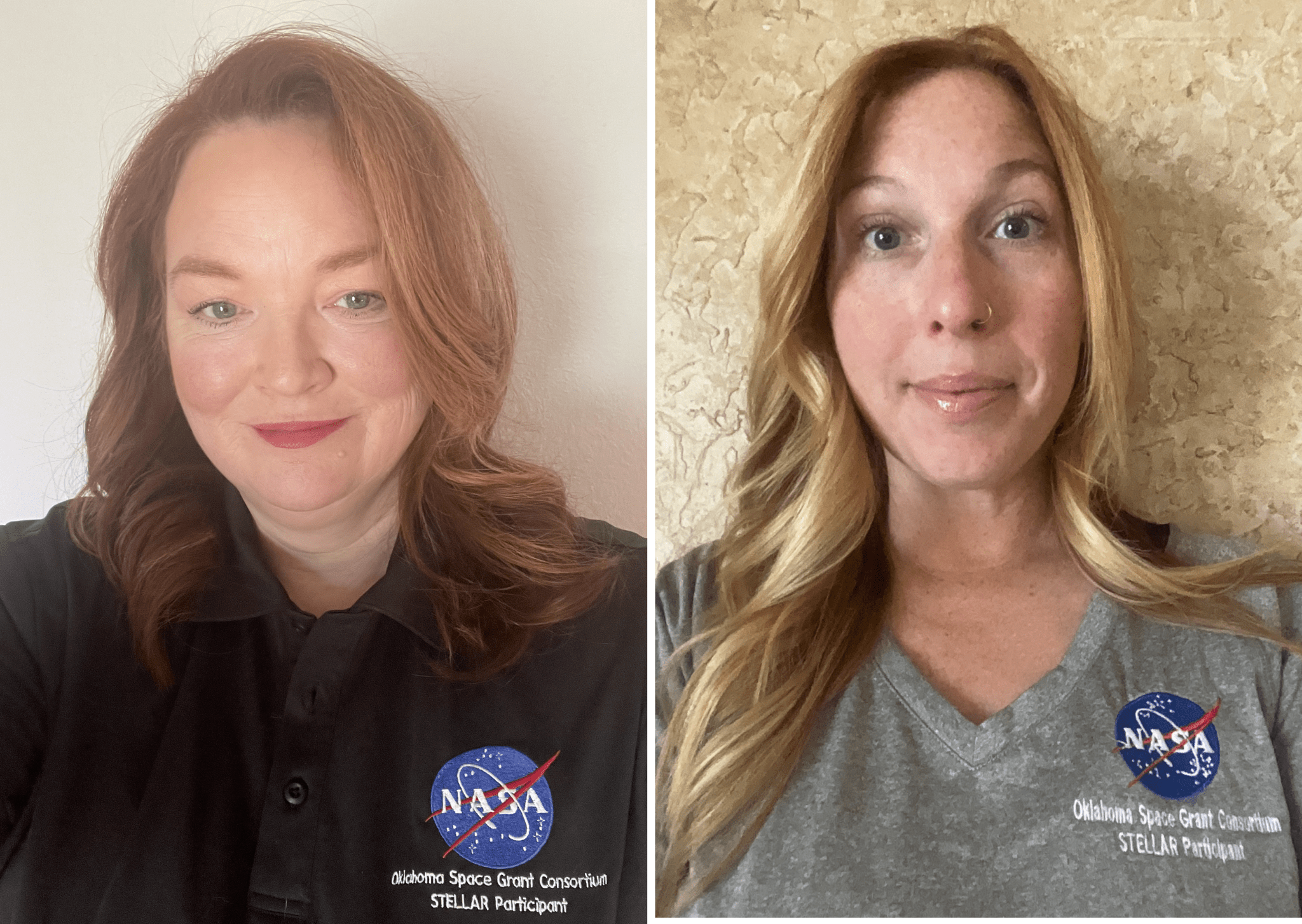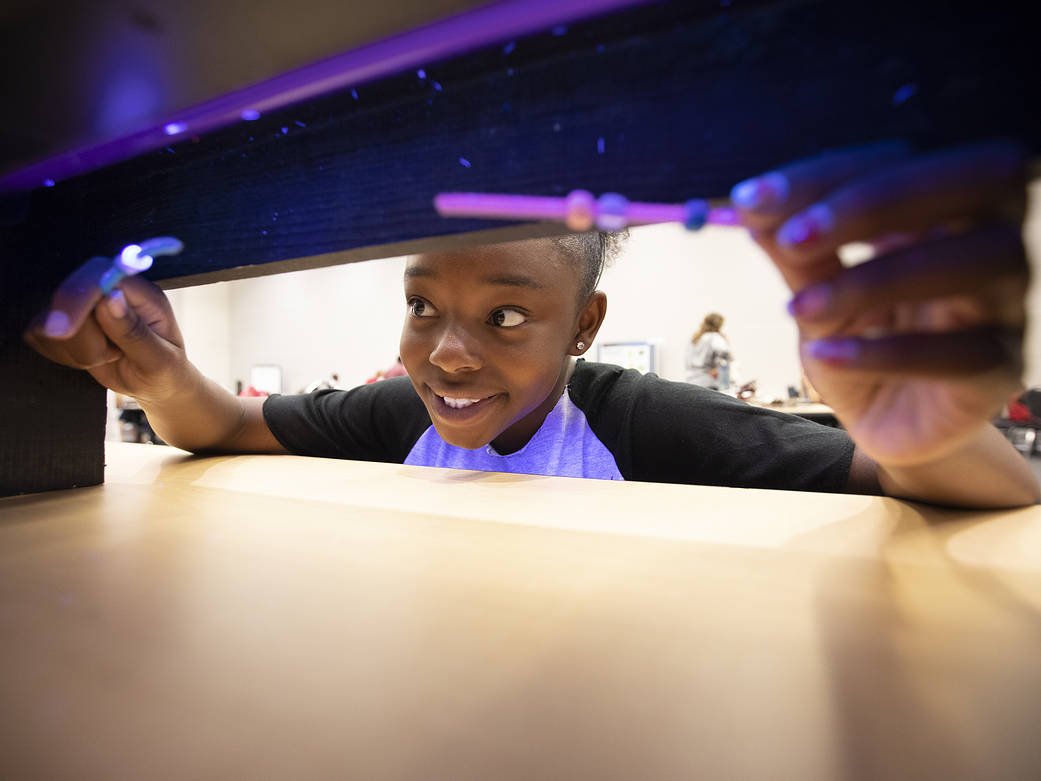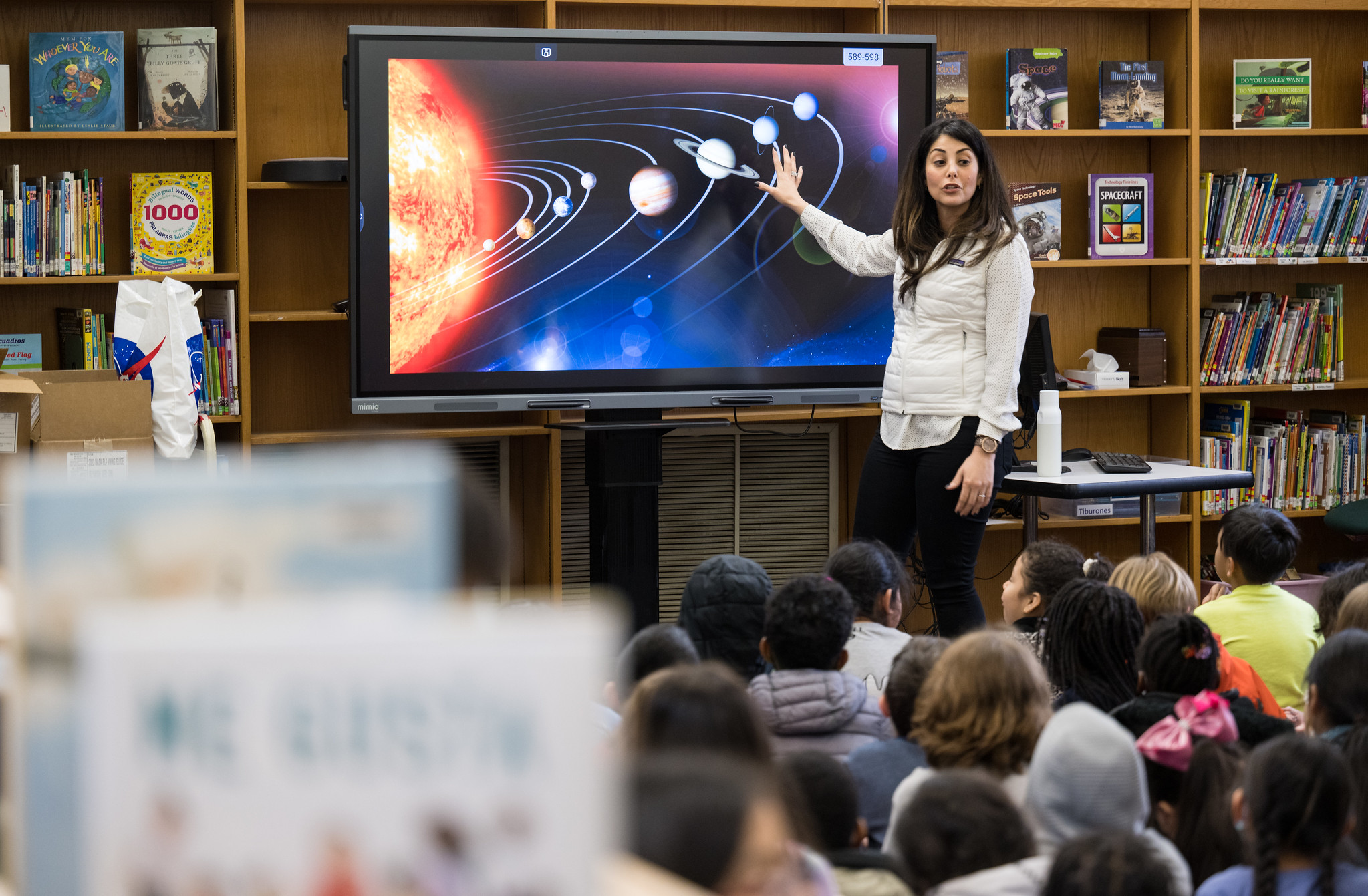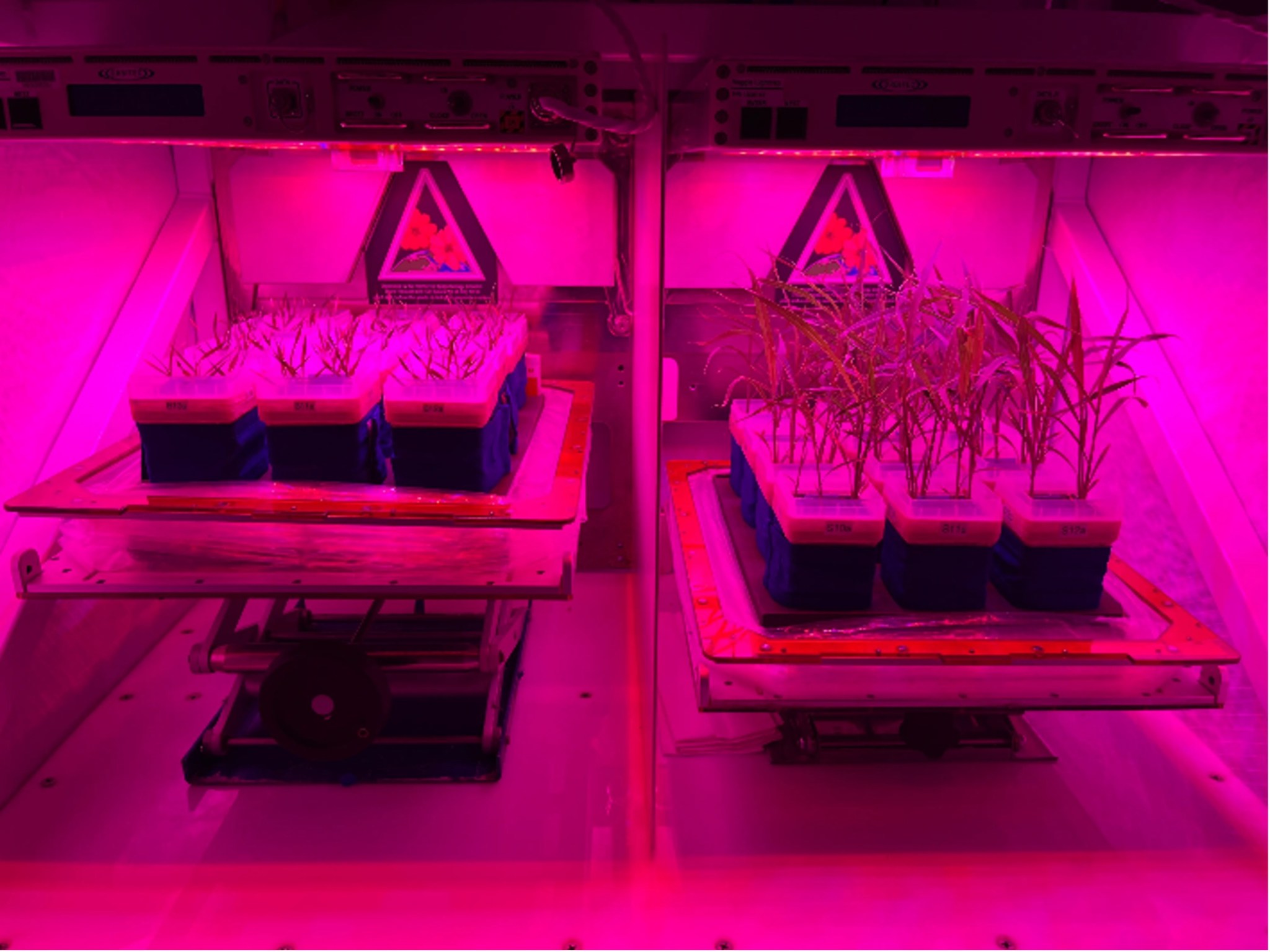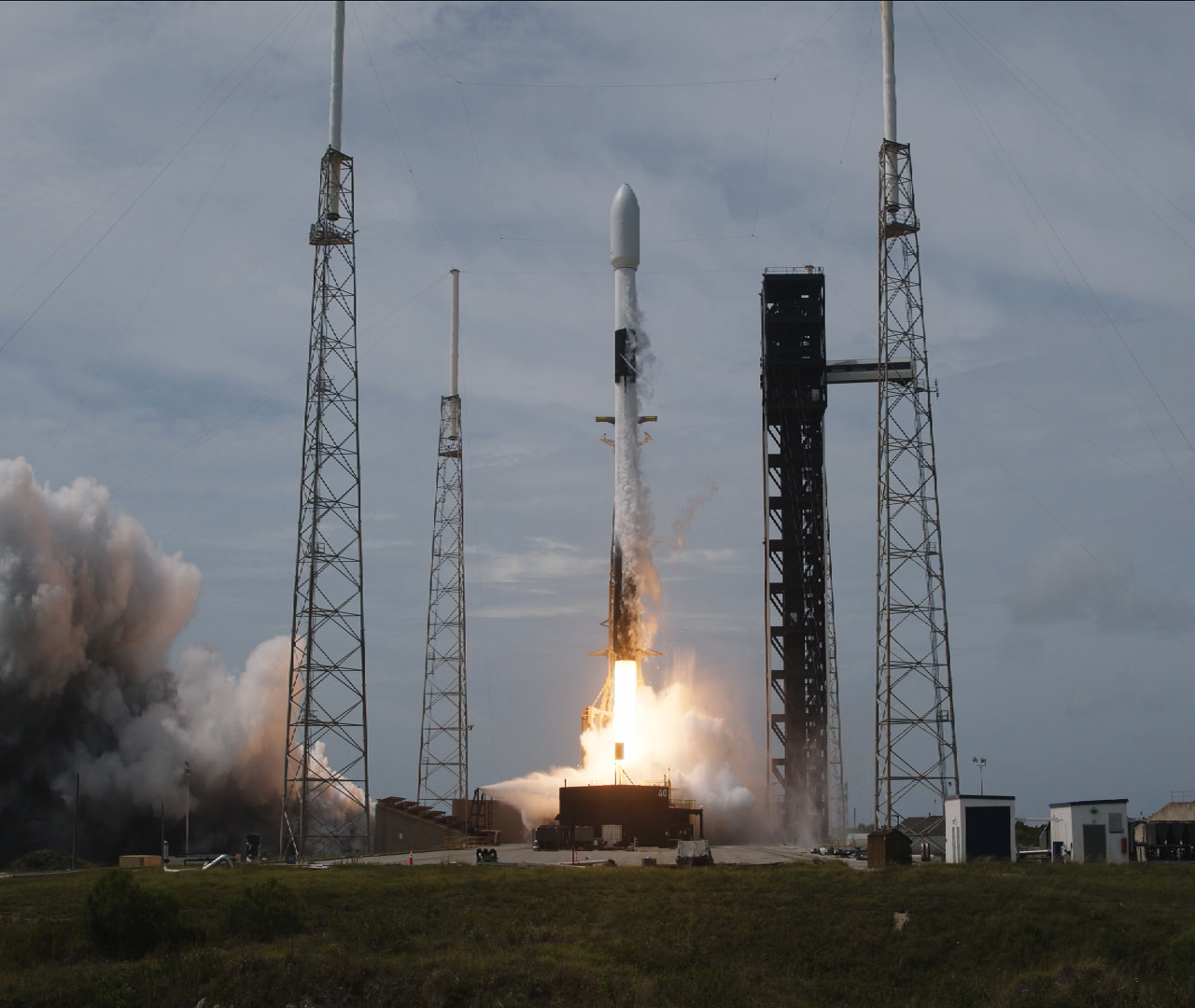The sun showcased its immense power yet again this morning (August 5), firing off not one but two X-class flares. X flares are the strongest solar flare class. Today’s first X blast, which launched from a sunspot called AR3767, reached its peak around 9:40 a.m. EDT (1340 GMT), clocking in at X1.7 on solar scientists’ flare scale. Then, less than two hours later, the sunspot AR3780 fired off an X1.1 class solar flare, which peaked at 11:27 a.m. EDT (1527 GMT). Solar flares are often accompanied by huge eruptions of solar…
Read MoreMonth: August 2024
NASA, LASP Sign Agreement To Advance Space Weather Research, Modeling
NASA’s Goddard Space Flight Center in Greenbelt, Maryland, and the Laboratory for Atmospheric and Space Physics (LASP) at the University of Colorado (CU) Boulder enacted a collaborative Space Act Agreement Monday, Aug. 5, 2024, to advance research and modeling in the critical field of space weather. NASA and LASP are longtime space science and exploration partners, and this formal agreement expands the depth and breadth of space weather activities for everyone’s benefit. Space weather refers to conditions in space — typically driven by the Sun’s activity — that can affect…
Read MoreStation Science Top News: August 2, 2024
Analyses suggest that microgravity does not significantly alter fundamental biochemical pathways in kidney cells, including metabolism of vitamin D. This finding could help researchers develop strategies to protect crew health on future missions and improve treatment of kidney-related diseases on Earth. Kidney Cells examined the effects of microgravity and other factors of space travel on kidney health. Previous reports suggested that changes in kidney cell metabolism of vitamin D plays a role in bone loss in microgravity, and this paper recommends additional study to determine if this most recent finding is consistent with extended (>6…
Read MoreAstroViz: Iconic Pillars of Creation Star in NASA’s New 3D Visualization
Learn Home AstroViz: Iconic Pillars of… For Educators Overview Learning Resources Science Activation Teams SME Map Opportunities More Science Stories Science Activation Highlights Citizen Science 4 min read AstroViz: Iconic Pillars of Creation Star in NASA’s New 3D Visualization NASA’s Universe of Learning – a partnership among the Space Telescope Science Institute (STScI), Caltech/IPAC, the Center for Astrophysics | Harvard & Smithsonian, and the Jet Propulsion Laboratory and part of the NASA Science Activation program portfolio – recently released a new 3D visualization of the towering clouds of cosmic…
Read MoreWhen Teachers Become the Students: Educators Spend Summer Studying STEM Engagement at Johnson
The summer months are usually a time for teachers to take a break from the classroom and enjoy some well-earned rest. But at NASA’s Johnson Space Center in Houston, two experienced educators dedicated their summer vacations to learning how to enrich their students’ science, technology, engineering, and mathematics (STEM) education and inspire them to achieve their dreams. Johnson’s Office of STEM Engagement (OSTEM) welcomed Jerry “Denise” Dunn and Shawnda Folsom as full-time interns for the summer. Both women came to Johnson through the Oklahoma Space Grant Consortium, which not only…
Read MoreHow Do I Navigate NASA Learning Resources and Opportunities?
4 Min Read How Do I Navigate NASA Learning Resources and Opportunities? NASA offers a variety of platforms and resources to support kindergarten through college educators in bringing the excitement of exploration and discovery to students in the classroom and beyond. From in-depth lesson plans to supplemental videos and activities, the resources below can help educators develop an out-of-this world curriculum and create unforgettable experiences for their students. Where Can I Find NASA STEM Learning Resources for My Classroom? NASA’s website has a dedicated section for the agency’s learning resources:…
Read MoreNASA Engagement Platform Brings Experts to Classrooms, Communities
NASA Technical Group Supervisor for Sequence Planning and Execution and Tactical Mission Lead for the Mars Perseverance rover, Diana Trujillo, speaks to students at Rolling Terrace Elementary School, Monday, March 13, 2023, in Takoma Park, Maryland. Photo Credit: (NASA/Aubrey Gemignani) NASA/Aubrey Gemignani With a new school year on the horizon, NASA is introducing a platform to connect communities with agency experts to share their experiences working on agency missions and programs for the benefit of humanity. Continuing a long-standing tradition of connecting the public with science, technology, engineering, and math,…
Read MoreEuropa Clipper Solar Array Alignment and Install
Technicians move NASA’s Europa Clipper spacecraft inside the Payload Hazardous Servicing Facility to accommodate installation of its five-panel solar array at the agency’s Kennedy Space Center in Florida on Thursday, Aug. 1, 2024. After moving the spacecraft, the team had to precisely align the spacecraft in preparation for the installation. The huge arrays – spanning more than 100 feet when fully deployed, or about the length of a basketball court – will collect sunlight to power the spacecraft as it flies multiple times around Jupiter’s icy moon, Europa, conducting science…
Read MoreNASA Sends More Science to Space, More Strides for Future Exploration
New experiments aboard NASA’s Northrop Grumman 21st cargo resupply mission aim to pioneer scientific discoveries in microgravity on the International Space Station. Northrop Grumman’s Cygnus spacecraft, filled with nearly 8,500 pounds of supplies, launched Aug. 4 atop a SpaceX Falcon 9 rocket from Space Launch Complex 40 at Cape Canaveral Space Force Station in Florida. Biological and physical investigations aboard the spacecraft included experiments studying the impacts of microgravity on plants (grass), how packed bed reactors could improve water purification both in space and on Earth, and observations on new…
Read MoreNASA Science, Cargo Launch on 21st Northrop Grumman Mission to Station
Northrop Grumman’s Cygnus spacecraft for the company’s 21st commercial resupply services mission for NASA launched on a SpaceX Falcon 9 rocket from Space Launch Complex 40 at Cape Canaveral Space Force Station in Florida. Credit: NASA Following a successful launch of NASA’s Northrop Grumman 21st commercial resupply mission, new scientific experiments and cargo for the agency are bound for the International Space Station. Northrop Grumman’s Cygnus spacecraft, carrying more than 8,200 pounds of supplies to the orbiting laboratory, lifted off at 11:02 a.m. EDT Sunday on a SpaceX Falcon 9…
Read More